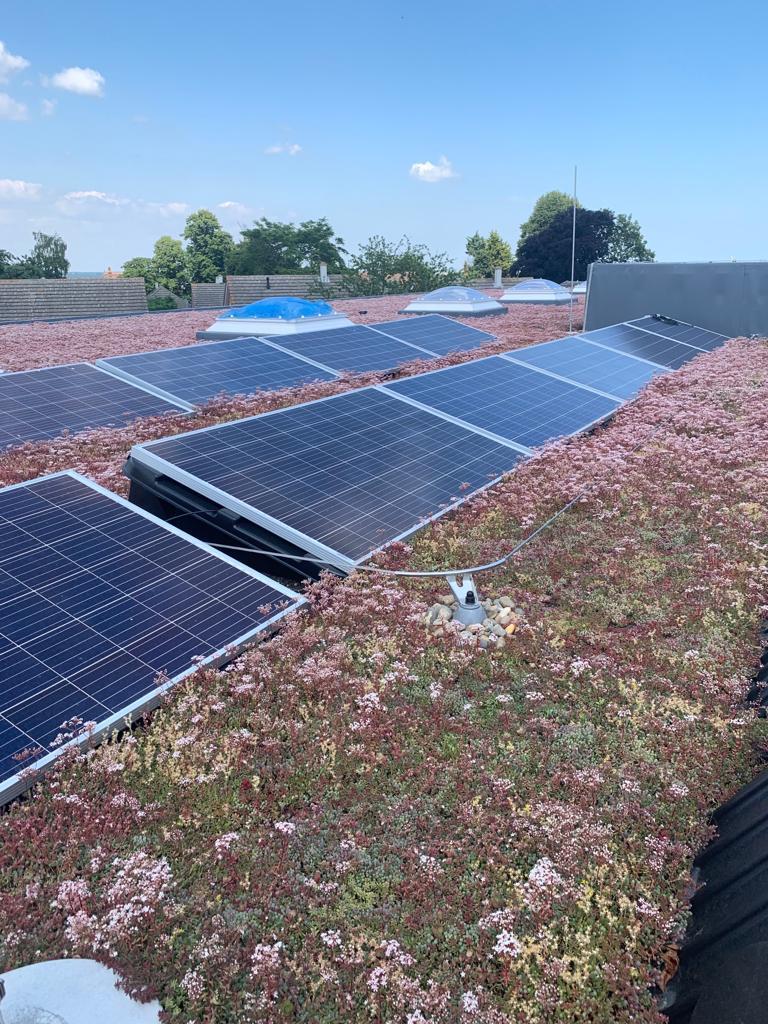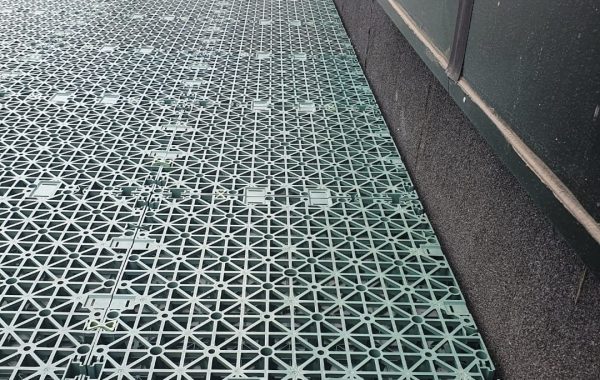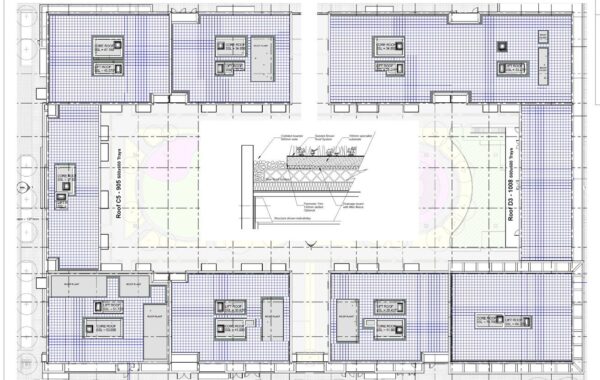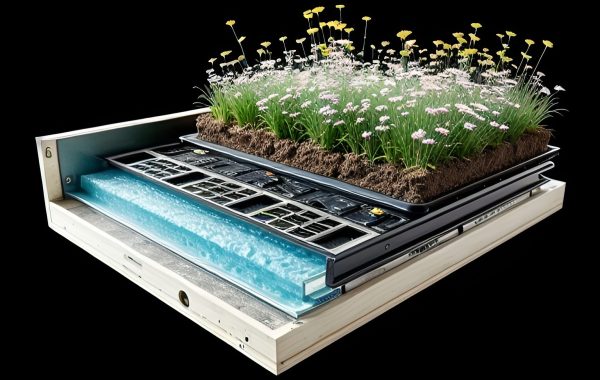The Power of Blue Roofs and Solar PV Panels
In the quest for sustainable urban environments, innovative solutions often arise from the harmonious integration of existing technologies. Two such technologies, blue roofs and solar photovoltaic (PV) panels, have the potential to reshape how we manage stormwater and harness renewable energy. In this in-depth article, we delve into the dynamic synergy between blue roofs and solar PV panels, exploring how they work together, the installation process, and the profound environmental and economic benefits of this integration.
Table of Contents
Introduction
- Urban Challenges: Stormwater and Energy
- The Promise of Blue Roofs and Solar PV Panels
Blue Roofs: A Brief Overview
- What Are Blue Roofs?
- Stormwater Management with Blue Roofs
Solar PV Panels: A Brief Overview
- Harnessing Solar Energy
- The Role of Solar PV Panels
The Symbiotic Relationship: Blue Roofs and Solar PV Panels
- How Blue Roofs and Solar PV Panels Complement Each Other
- Maximizing Rooftop Efficiency
Installation Process
- Design Considerations
- Construction and Integration
Benefits of Blue Roofs and Solar PV Panels Integration
- Dual Functionality: Stormwater Management and Energy Generation
- Environmental Benefits
- Economic Advantages
Case Studies: Realizing the Potential
- Exemplary Projects in Sustainable Urban Development
Challenges and Considerations
- Technical Challenges
- Maintenance and Cost Factors
The Bright Future of Sustainable Cities
- Expanding the Adoption of Blue Roofs with Solar PV Panels
- A Vision of Urban Resilience
Conclusion
- A Sustainable Tomorrow through Integration
1. Introduction
Urban Challenges: Stormwater and Energy
As urbanization continues at an unprecedented pace, cities grapple with multifaceted challenges. Chief among these challenges are effective stormwater management and the need to transition to sustainable energy sources.
Stormwater Management: Rapid urbanization often results in increased impervious surfaces, leading to excessive stormwater runoff. Conventional drainage systems struggle to cope, resulting in flooding, erosion, and water pollution.
Energy Transition: The transition to renewable energy sources is a global imperative to combat climate change. Solar PV panels have emerged as a clean and sustainable energy solution. However, the limited available space in urban areas poses challenges for their widespread adoption.
The Promise of Blue Roofs and Solar PV Panels
Blue roofs offer a solution to urban stormwater challenges, emphasizing the controlled retention and release of rainwater. Solar PV panels, on the other hand, harness the sun’s energy to generate electricity. When these two technologies converge on urban rooftops, they create a powerful combination that addresses both stormwater management and renewable energy generation.
In this article, we explore how blue roofs and solar PV panels work in harmony, from the fundamental principles to the tangible benefits they offer for urban sustainability.
2. Blue Roofs: A Brief Overview
What Are Blue Roofs?
Blue roofs are engineered stormwater management systems designed to store rainwater temporarily. Instead of allowing rain to flow off rooftops immediately, blue roofs capture and control the runoff. These systems consist of various components, including storage layers, control mechanisms, and safety features.
Stormwater Management with Blue Roofs
Blue roofs excel in managing rainwater efficiently. They slow down the flow, store the water, and release it gradually or for reuse. By doing so, blue roofs alleviate the burden on drainage systems, reduce the risk of flooding, and protect water bodies from pollution.
3. Solar PV Panels: A Brief Overview
Harnessing Solar Energy
Solar energy is a clean and abundant source of power. Solar PV panels, also known as photovoltaic panels, convert sunlight into electricity through the photovoltaic effect. This sustainable technology has gained prominence as a crucial component of the global transition to renewable energy sources.
The Role of Solar PV Panels
Solar PV panels are typically installed on rooftops or in solar farms to generate electricity. They are comprised of solar cells, which capture photons from sunlight and convert them into direct current (DC) electricity. This electricity can be used immediately, stored in batteries, or converted into alternating current (AC) electricity for use in homes, businesses, and the grid.
4. The Symbiotic Relationship: Blue Roofs and Solar PV Panels
How Blue Roofs and Solar PV Panels Complement Each Other
The synergy between blue roofs and solar PV panels lies in their complementary functions:
Blue Roofs for Stormwater Management: Blue roofs capture and manage rainwater, reducing the strain on drainage systems. By retaining water temporarily, they prevent flooding and water pollution.
Solar PV Panels for Energy Generation: Solar PV panels convert sunlight into electricity, providing a clean and renewable energy source. When integrated with blue roofs, they make efficient use of available rooftop space.
Maximizing Rooftop Efficiency
The integration of blue roofs with solar PV panels optimizes the utilization of urban rooftop space. Rooftops, traditionally underutilized, become multifunctional assets that contribute to both stormwater management and renewable energy generation.
5. Installation Process
Design Considerations
Effective integration of blue roofs and solar PV panels requires careful planning and design. Key considerations include:
Structural Integrity: Ensuring that the building structure can support the added weight of both blue roofs and solar PV panels.
Water Management: Designing an efficient rainwater capture and storage system that complements the solar PV panel array.
Safety Measures: Implementing safety features like guardrails, access points, and maintenance protocols.
Construction and Integration
The construction process involves layering the components of both blue roofs and solar PV systems. Waterproofing membranes, drainage systems, storage layers, and control mechanisms for blue roofs are coordinated with the installation of solar PV panels. Proper integration ensures seamless functionality and efficiency.
6. Benefits of Blue Roofs and Solar PV Panels Integration
Dual Functionality: Stormwater Management and Energy Generation
The integration of blue roofs with solar PV panels offers a range of benefits:
Efficient Space Utilization: Rooftops become dual-purpose, serving both stormwater management and energy generation needs.
Resilience to Storms: Blue roofs reduce the risk of flooding and water damage during heavy rain, while solar PV panels continue to generate electricity.
Clean Energy Production: Solar PV panels contribute to renewable energy generation, reducing greenhouse gas emissions.
Environmental Benefits
Reduced Urban Heat Islands: Blue roofs’ water retention and cooling effect complement the solar PV panels’ shading, mitigating the urban heat island effect.
Improved Air Quality: Solar PV panels reduce the reliance on fossil fuels for electricity generation, leading to improved air quality and reduced pollution.
Economic Advantages
Energy Cost Savings: Solar PV panels can lead to significant electricity cost savings for building owners.
Government Incentives: Many regions offer incentives, tax credits, and subsidies for renewable energy installations, further enhancing the economic viability of integration.
7. Case Studies: Realizing the Potential
To illustrate the real-world impact of blue roofs and solar PV panels integration, let’s explore some notable case studies:
The Crystal, London, UK: The Crystal, an iconic sustainable building in London, showcases the synergy of blue roofs and solar PV panels. Its blue roof system efficiently manages rainwater, while the extensive solar PV panel array generates clean electricity, contributing to the building’s net-zero energy status.
Manchester Science Park, UK: Manchester Science Park incorporates blue roofs with integrated solar PV panels on several of its buildings. This integration not only manages stormwater effectively but also supports the park’s commitment to sustainable energy practices.
These UK-based case studies exemplify the tangible benefits and successful integration of blue roofs and solar PV panels in urban environments.
8. Challenges and Considerations
Technical Challenges
Structural Capacity: Ensuring that the building structure can support the weight of both blue roofs and solar PV panels can be technically challenging.
Maintenance: Regular maintenance is essential to ensure the continued functionality of both systems.
Maintenance and Cost Factors
Initial Costs: The upfront costs of installing blue roofs and solar PV panels can be significant.
Long-Term Benefits: Despite the initial investment, the long-term benefits, including energy savings and reduced stormwater management costs, often outweigh the expenses.
9. The Bright Future of Sustainable Cities
Expanding the Adoption of Blue Roofs with Solar PV Panels
The integration of blue roofs and solar PV panels represents a significant step toward creating greener, more resilient cities. As urban areas continue to grow, the demand for sustainable solutions that address stormwater management and renewable energy generation will only increase.
A Vision of Urban Resilience
The harmonious integration of blue roofs and solar PV panels reflects a broader vision of urban resilience. It’s a future where cities harness the power of innovation and collaboration to confront the challenges of climate change, mitigate urban heat islands, and transition to renewable energy sources.
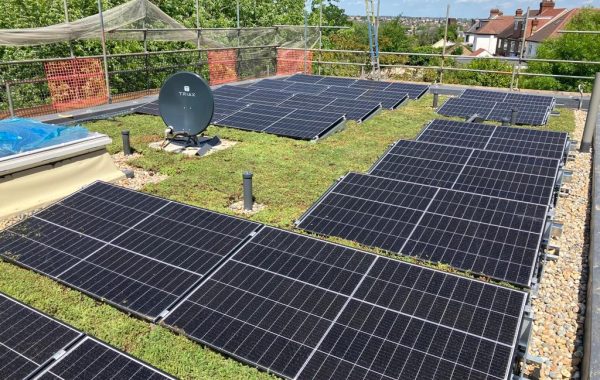
10. Conclusion
A sustainable tomorrow requires innovative solutions that address the pressing challenges of our time. Blue roofs and solar PV panels, when integrated on urban rooftops, offer a compelling example of how technology and environmental stewardship can coexist. This integration transforms rooftops into multifunctional assets, providing efficient stormwater management and clean energy generation.
As we continue to explore ways to build sustainable and resilient cities, the symbiotic relationship between blue roofs and solar PV panels stands as a beacon of hope, guiding us toward a future where urban environments are both environmentally responsible and energy-efficient. In harnessing this synergy, we take another step closer to a brighter, more sustainable world.
Have a project in mind? Send a message.
Send a message


